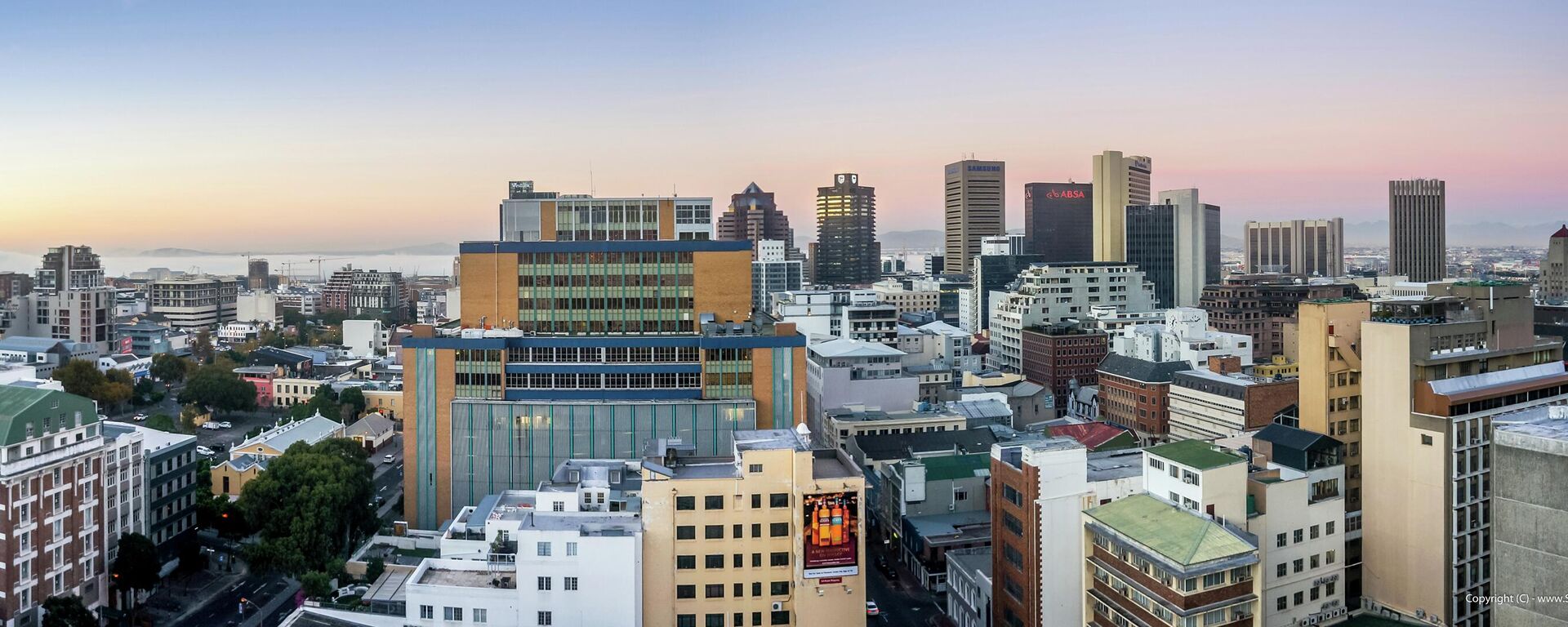https://en.sputniknews.africa/20240416/half-of-most-vulnerable-nations-face-income-gaps-with-rich-countries-world-bank-reports-1066094165.html
Half of Most Vulnerable Nations Face Widening Income Gaps With Rich Countries, World Bank Reports
Half of Most Vulnerable Nations Face Widening Income Gaps With Rich Countries, World Bank Reports
Sputnik Africa
75 countries that are eligible for zero- or low-interest grants and loans from the World Bank's International Development Association (IDA) are considered by... 16.04.2024, Sputnik Africa
2024-04-16T14:21+0200
2024-04-16T14:21+0200
2024-04-16T14:35+0200
sub-saharan africa
world bank
economy
finance
southern africa
east africa
central africa
west africa
poverty
kosovo
https://cdn1.img.sputniknews.africa/img/103363/61/1033636177_0:160:3073:1888_1920x0_80_0_0_0417816725f05967e9e27ba7712af89a.jpg
Half of the world's 75 most vulnerable economies are experiencing a widening income gap with the wealthiest economies for the first time in the 21st century, the World Bank said in a new report.The World Bank found that between 2020 and 2024, per capita income in half of IDA member countries grew more slowly than in richer countries, exacerbating income inequality.In particular, the COVID-19 pandemic has had an impact on the deteriorating economic situation in vulnerable countries, the organization noted, adding that recovery has been hampered by conflicts and macroeconomic conditions.According to the report, nearly one-third of the 75 IDA countries are now poorer on average than before the pandemic.In addition, half of the vulnerable countries are either in debt distress or at high risk of debt distress, according to the World Bank. Meanwhile, foreign lenders - both private and sovereign - have pulled back, the organization emphasized, explaining that IDA countries today have large investment needs to close existing development and infrastructure gaps and build resilience to climate change.On the positive side, at a juncture when many nations are grappling with aging populations, IDA countries stand out with a promising demographic dividend, characterized by a growing share of young workers projected until 2070, the World Bank said. Additionally, they possess rich natural resources and ample potential for solar energy generation, factors that could catalyze their development trajectory.In addition to the 40 countries in sub-Saharan Africa, the World Bank lists 26 Asian countries, eight Latin American and Caribbean countries, and Kosovo in Europe as the most vulnerable.
https://en.sputniknews.africa/20240408/economic-growth-in-sub-saharan-africa-to-reach-34-in-2024-world-bank-forecasts-1065973337.html
southern africa
east africa
central africa
west africa
kosovo
Sputnik Africa
feedback@sputniknews.com
+74956456601
MIA „Rossiya Segodnya“
2024
Maxim Grishenkin
https://cdn1.img.sputniknews.africa/img/07e7/0a/17/1063018107_0:0:1104:1103_100x100_80_0_0_03090c85a11f5d2e8a19cf1d989443c9.jpg
Maxim Grishenkin
https://cdn1.img.sputniknews.africa/img/07e7/0a/17/1063018107_0:0:1104:1103_100x100_80_0_0_03090c85a11f5d2e8a19cf1d989443c9.jpg
News
en_EN
Sputnik Africa
feedback@sputniknews.com
+74956456601
MIA „Rossiya Segodnya“
Sputnik Africa
feedback@sputniknews.com
+74956456601
MIA „Rossiya Segodnya“
Maxim Grishenkin
https://cdn1.img.sputniknews.africa/img/07e7/0a/17/1063018107_0:0:1104:1103_100x100_80_0_0_03090c85a11f5d2e8a19cf1d989443c9.jpg
world bank, economy, finance, southern africa, east africa, central africa, west africa, poverty, kosovo
world bank, economy, finance, southern africa, east africa, central africa, west africa, poverty, kosovo
Half of Most Vulnerable Nations Face Widening Income Gaps With Rich Countries, World Bank Reports
14:21 16.04.2024 (Updated: 14:35 16.04.2024) 75 countries that are eligible for zero- or low-interest grants and loans from the World Bank's International Development Association (IDA) are considered by the organization to be the most vulnerable. More than half of them (40) are in sub-Saharan Africa.
Half of the world's 75 most vulnerable economies are experiencing a widening income gap with the wealthiest economies for the first time in the 21st century, the World Bank said in a new
report.
The World Bank found that between 2020 and 2024, per capita income in half of IDA member countries grew more slowly than in richer countries, exacerbating income inequality.
In particular, the COVID-19 pandemic has had an impact on the deteriorating economic situation in vulnerable countries, the organization noted, adding that recovery has been hampered by conflicts and macroeconomic conditions.
"The emergence of COVID-19 saw GDP growth in these countries fall to 0.3% in 2020—the lowest rate recorded since the early 1980s. The recovery since 2020 has been undermined by other shocks, including conflicts, a sharp increase in global inflation, a rapid rise in interest rates, and a tightening in global financial conditions," the World Bank pointed out.
According to the report, nearly one-third of the 75 IDA countries are now poorer on average than before the pandemic.
"The extreme poverty rate is more than eight times the average in the rest of the world: one in four people in IDA countries struggles on less than $2.15 a day. These countries now account for 90% of all people facing hunger or malnutrition," the report read.
In addition, half of the vulnerable countries are either in debt distress or at high risk of debt distress, according to the World Bank. Meanwhile, foreign lenders - both private and sovereign - have pulled back, the organization emphasized, explaining that IDA countries today have large investment needs to close existing development and infrastructure gaps and build resilience to climate change.
"Significant financial support from the global community is essential to enable progress in IDA countries and overcome the serious risk of more protracted stagnation," the report read.
On the positive side, at a juncture when many nations are grappling with aging populations, IDA countries stand out with a promising demographic dividend, characterized by a growing share of young workers projected until 2070, the World Bank said.
Additionally, they possess rich natural resources and ample potential for solar energy generation, factors that could catalyze their development trajectory.
In addition to the 40
countries in sub-Saharan Africa, the World Bank lists 26 Asian countries, eight Latin American and Caribbean countries, and Kosovo in Europe as the most vulnerable.



